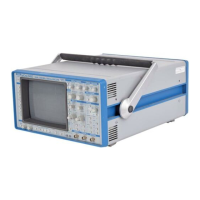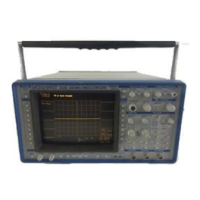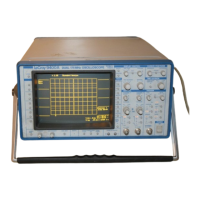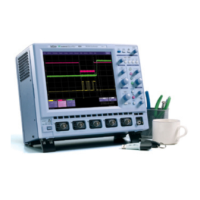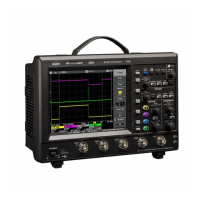8–2
Triggers and When to Use Them
Edge or SMART
A variety of triggers for different applications can be
chosen from the two main trigger groups, the Edge and
SMART trigger types.
Edge Triggers In the Edge group of menus trigger conditions are defined by the
vertical trigger level, coupling, and slope. Edge triggers use simple
selection criteria to characterize a signal. They are most useful for
triggering on simple signals (see page 8–3).
SMART Trigger The SMART Trigger types allow additional qualifications to be
set before a trigger is generated. These qualifications can be
used to capture rare phenomena such as glitches or spikes,
specific logic states, or missing bits. A qualification might
include trigger generation only on a pulse wider or narrower than
a user-specified limit. Or it might require — to take but another
example — three trigger sources exceeding specific levels for a
minimum time.
Generally speaking, SMART Trigger offers various trigger
qualifications based on three basic abilities:
1. To count a specified number of events
2. To measure time intervals
3. To recognize a pattern input.
SMART explanations start on page 8–10 and on page menus 8–
29.
Trigger Symbols, illustrated throughout this chapter,
allow immediate on-screen recognition of the current
trigger conditions. There is a symbol for each Edge and
SMART Trigger type, with the more heavily-marked
transitions on the symbols indicating where a trigger will be
generated.
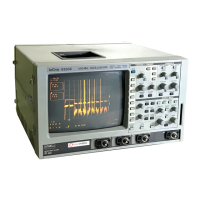
